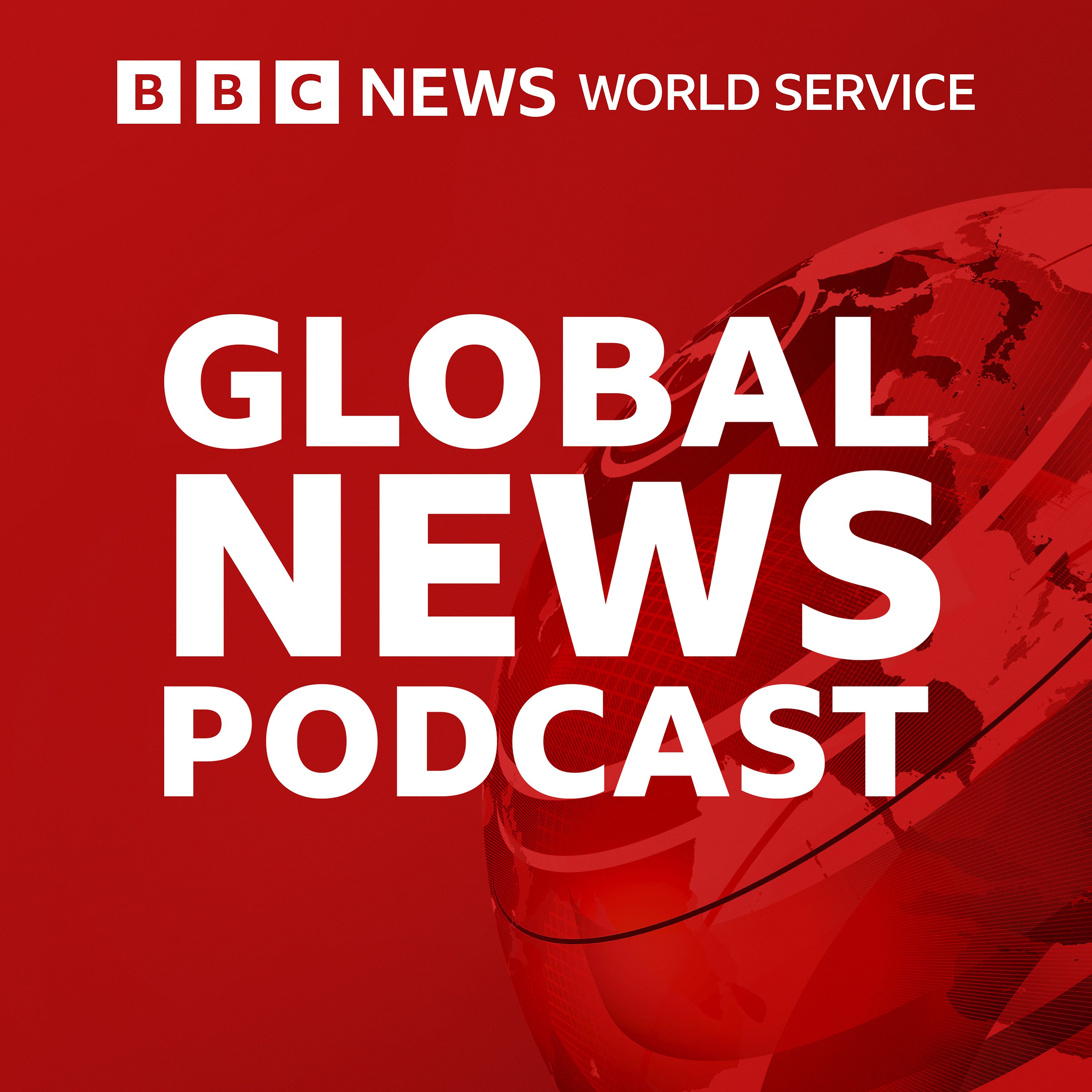
That's Life, I Swear
Every Wednesday, join Rick Barron as he unravels the intricate threads of life's most captivating stories. From heart-pounding political dramas to the awe-inspiring challenges of climate change, he explores the topics that shape our world and define our era.
But this isn't just another talk show. Rick delves deep into the human psyche, examining our beliefs, behaviors, and the obstacles we overcome. He celebrates our triumphs and embraces our imperfections, uncovering the profound lessons hidden in everyday experiences.
The episodes are a journey of self-discovery as he shares stories that mirror our collective identity. These tales aren't just entertaining – they're a reflection of who we are, who we were, and who we aspire to be. They carry the weight of our ancestral legacy, the fire of our dreams, and the depths of our pain.
With each episode, you'll confront your deepest anxieties about yourself, your place in the world, and the future that awaits us all. In understanding these complexities, you'll find inspiration, connection, and perhaps even transformation.
"That's Life, I Swear" isn't just a podcast – it's a weekly rendezvous with the extraordinary nature of ordinary life. Subscribe now, wherever you get your podcasts, and join Rick on this unforgettable exploration of the human experience. After all, that's life, I swear.
That's Life, I Swear
Seeds of Survival: The Arctic's Global Mission
The Seed Vault safeguards duplicates of 1,214,827 seed samples from almost every country in the world, with room for millions more. Its purpose is to backup gene bank collections to secure the foundation of our future food supply.
supporting links
1. Global Seed Vault becomes more important as climate change [PBS]
2. Artic World Archive [Wikipedia]
3. Gene Bank [Wikipedia]
4. Genesys [website]
5. Lack Of Funding, Seed Banks Face a World of Challenges [Smithsonian Magazine]
6. Pavlovsk Experimental Station [Wikipedia]
7. The men who starved to death to save the world's seeds [Russia Beyond]
8. Center for Plant Conservation [Save Plants Org]
9. Organic Seed Alliance [website]
10. What is a Seed Bank? [Woodland Trust]
Contact That's Life, I Swear
- Visit my website: https://www.thatslifeiswear.com
- Twitter at @RedPhantom
- Bluesky at @rickbarron.bsky.social
- Email us at https://www.thatslifeiswear.com/contact/
Episode Review
- Submit on Apple Podcast
- Submit on That's Life, I Swear website
Other topics?
- Do you have topics of interest you'd like to hear for future podcasts? Please email us
Interviews
- Contact me here https://www.thatslifeiswear.com/contact/, if you wish to be a guest for a interview on a topic of interest
Listen to podcast audios
- Apple https://apple.co/3MAFxhb
- Spotify https://spoti.fi/3xCzww4
- My Website: https://bit.ly/39CE9MB
Other
- Music ...
⏱️ 9 min read
In contemplating vibrant harvests and sprawling fields, the Arctic isn't typically the first locale that comes to mind. Yet nestled just 800 miles shy of the North Pole, the Global Seed Vault serves as a bastion of emergency reserves for a vast array of the globe's crops. Here, scientists find the essential resources to cultivate plants resilient enough to navigate an ever-evolving environment.
Welcome to That's Life, I Swear. This podcast is about life's happenings in this world that conjure up such words as intriguing, frightening, life-changing, inspiring, and more. I'm Rick Barron your host.
That said, here's the rest of this story
Buried within the frigid depths of a giant peak, covered with ice sheets, is the Svalbard Global Seed Vault, set in permafrost caves on an island halfway between mainland Europe and the North Pole. The vault was launched in 2008 as the ultimate backup for the world's gene banks to protect plants from war, disease and climate change.
Inside the vault lies a critical asset for the future of humanity. This treasure isn't comprised of coal, oil, or precious metals, but rather, an invaluable collection of seeds.
Why does this matter?
Contained within the Global Seed Vault, situated on the remote Spitsbergen Island , approximately 600 miles north of Norway, are millions of these microscopic kernels, representing over 930,000 diverse strains of essential crops. Functioning as a colossal safeguard, this vault harbors the world's most extensive array of agricultural biodiversity. Within these walls lies a tapestry of agricultural heritage spanning 13,000 years.
The desolate wilderness of Svalbard presents an unparalleled sense of isolation. Situated at the utmost reaches of commercial aviation, except for the nearby settlement of Longyearbyen, it stands as a vast, pristine canvas of icy desolation.
Referred to as the "doomsday" vault, the Global Seed Vault evokes images of a sanctuary safeguarding seeds for a cataclysmic event or global catastrophe. This was the driving force behind its inauguration on February 26, 2008.
Designed as a bastion of security for crop diversity, this vault houses duplicates of seeds chosen with extreme care conserved in gene banks across the world. Its mission: to safeguard the world's food supply against any extreme threats that jeopardize the integrity of these precious seeds. From mismanagement to equipment failures, from funding cuts to natural disasters, the Seed Vault stands as a fortification against potential catastrophes.
Its custodianship falls under the purview of a three-way agreement between the Norwegian government, Crop Trust, and the Nordic Genetic Resource Center, ensuring meticulous management and unwavering dedication to its vital purpose.
The Global Seed Vault does have a neighbor nearby on the same island, the Arctic World Archive, which mirrors its mission of seclusion from worldly dangers. This archive, nestled deep within a nearby mine, opened its doors on March 27, 2017, aiming to safeguard data for governments and private entities worldwide.
When the Global Seed Vault doors were opened, samples from India, Pakistan, and Syria. "Every day, there are large numbers of doomsdays unfolding across the globe. Genetic resources are vanishing at an alarming rate," as stated by Marie Haga, who was executive director of Crop Trust, and now working at the International Fund for Agricultural Development (IFAD).
Let’s talk about the structure of the seed vault itself. Standing near the vault's entrance, which is somewhat foreboding, a stark rectangular protrusion appears against the snowy mountain. Upon first site of the entrance, one can see why, the nickname "doomsday" seems rather fitting. It was the remoteness of Svalbard that led to its selection as the vault's site. "It is distanced from the turmoil and unrest that plagues other parts of the world. It's nestled in a secure location," as stated by Bente Naeverdal, the property manager that oversees the vault's daily operations.
Upon entering, one finds themselves in a confined, tunnel-like space resonating with the hum of electrical and cooling apparatuses essential for maintaining the vault's consistent temperature. Through a door lies a broad concrete passageway, illuminated by strip lighting, descending 430 feet into the heart of the mountain. At the end of the passageway stands a chamber, an additional security measure safeguarding the vaults housing the precious seeds.
From this chamber, three vaults extend outward, its entrance obscured by a thick coating of ice, indicative of the frigid conditions within. Inside, the seeds rest within vacuum-sealed silver envelopes and test tubes, stored in sizable containers neatly arranged on shelves that stretch from floor to ceiling. While possessing minimal monetary value, these containers potentially harbor the solutions to global food security challenges.
Think of the Seed Vault as a safe deposit box in a bank.
· The bank owns the building and the depositor owns the contents of their box.
· The Government of Norway owns the facility and the depositing gene banks own the seeds they send.
· The deposit of samples in Svalbard does not constitute a legal transfer of genetic resources.
· In gene bank terminology this is called a "black box" arrangement. Each depositor signs a Deposit Agreement with NordGen, acting on behalf of Norway.
· The Agreement makes clear that Norway does not claim ownership over the deposited samples and that ownership remains with the depositor, who has the sole right of access to those materials in the seed vault.
· No one has access to anyone else's seeds from the seed vault. The database of samples and depositors is maintained by NordGen
Over the preceding five decades, agricultural methodologies have undergone significant transformations, driven by technological progress enabling large-scale crop cultivation. However, alongside the increase in crop yields, there has been a notable decline in biodiversity. Presently, a mere 30 crops fulfill 95% of human dietary energy requirements. For instance, only a fraction of the rice varieties utilized in China during the 1950s remain in cultivation today. In similar fashion, the United States has witnessed the disappearance of over 90% of its fruit and vegetable cultivars since the 1900s.
Within the vault lies an assortment of seeds, ranging from wild to ancient varieties, many of which have fallen out of common usage. A significant portion of these seeds exists solely within the collections housed in the vault. However, the genetic diversity harbored within offers the potential to unlock DNA traits crucial for developing new strains capable of confronting future global or regional challenges.
Among the abundance of rice varieties stored within the vault, numbering around 200,000, lies the possibility of uncovering traits essential for adapting rice to elevated temperatures or conferring resistance against emerging pests and diseases. Such endeavors become increasingly vital when dealing the backdrop of climate change today.
Marie Haga states, and I quote: that "Crop diversity is often overlooked in its significance, but it stands as a cornerstone, almost as vital as water and air. Seeds are the foundation of not only our nourishment but also our attire, shaping the very fabric of the natural world around us." End quote.
Across the world, approximately 1,700 gene banks, are serving as comparable versions of the giant Seed Vault. They collect, preserve, and exchange seeds to propel agricultural research and cultivate new varieties. The establishment of the Svalbard vault in 2008 serves as a fail-safe storage facility for the large varieties housed within these global networks.
In celebration of its first [Feb/2008] anniversary, the Seed Vault welcomed over 90,000 new food crop seed samples into its secure chambers, augmenting the total count to a formidable 400,000. Notable additions included 32 distinct varieties of potatoes sourced from Ireland's esteemed national gene banks, along with a substantial contribution of 20,000 fresh samples courtesy of the U.S. Agricultural Research Service.
Further diversifying its repository, additional seed specimens have arrived over the years from gene banks spanning the world, including those from Canada, Switzerland, Colombia, and other countries. Remarkably, the Seed Vault now houses samples representing approximately one-third of the world's most vital food crop varieties.
The Seed Vault concept originated in the 1980s under the guidance of Cary Fowler, a former executive director of Crop Trust, gaining traction following the signing of the International Seed Treaty by the U.N. in 2001. Construction was underwritten by the Norwegian government, which, in collaboration with the Crop Trust, oversees the vault's operations.
The overarching objective is to secure a duplicate of every distinct seed housed within global gene banks; soon, the vault will welcome its millionth variety. Furthermore, it functions synergistically with these gene banks to mitigate the loss or destruction of their genetic material.
An example of loss due to unexpected circumstances, was when The International Center for Agricultural Research in the Dry Areas (ICARDA), a global agricultural research institution previously headquartered in Syria, found itself compelled to abandon its base just outside Aleppo that was destroyed during the Syrian civil war.
The gene bank that was in Aleppo was merely one casualty among several threatened by the ravages of war or other incidents. Similar repositories in Afghanistan and Iraq have fallen due to destruction, resulting in the loss of genetic material. However, the peril facing these invaluable resources extends beyond armed conflict alone. Some have fallen victim to natural calamities, such as the Philippine national gene bank, which suffered damage from flooding triggered by a typhoon and later a devastating fire. Yet, perhaps the most pressing threat confronting the world's gene banks is the chronic lack of resources.
Plagued by poor underfunding, many of these institutions lack the means to adequately store or safeguard the seeds under their care. In response, the Crop Trust established a campaign to raise funds for an endowment aimed at ensuring the sustained viability of the world's 1,700 gene bank facilities, essential bastions of global biodiversity.
The sacrifices made to preserve has been happening for almost 100 years. A historical note to point out was what took place in St. Petersburg during World War II. At the St. Petersburg's Vavilov Research Institute, deposits of various seeds were happening, and perhaps one of the earliest seed collections worldwide. During the siege of Leningrad, a group of approximately a dozen scientists bravely barricaded themselves within the room housing the seeds, shielding them from the hunger-stricken populace and the encroaching German army.
The Leningrad seedbank was preserved and protected through the 28-month long Siege of Leningrad. While artworks were evacuated from the Hermitage Museum, the world's largest seedbank remained untouched. Scientists at the Vavilov Institute safeguarded 250,000 samples of seeds, roots, and fruits in the basement, resisting the temptation to consume them despite facing starvation. The scientists who took shifts around the clock to protect the seeds, driven by their unwavering belief in the seeds' pivotal role in Russia's post-war recovery and the preservation of humanity's future.
In an era marked by heightened geopolitical tensions and unpredictability, the Seed vault emerges as a beacon of unconventional and optimistic international collaboration for the betterment of humanity. Unconstrained by political affiliations or diplomatic protocols, any entity or nation is welcome to deposit seeds within its confines.
Any organization or country can send seeds to it, and there are no restrictions because of politics or the requirements of diplomacy. Red wooden boxes from North Korea sit alongside black boxes from the U.S. Over on the next aisle, boxes of seeds from Ukraine sit atop seeds from Russia.
Perhaps the human race can actually work together for the better good after all. While there are many gene banks around the world, think of the Svalbard Global Seed Vault as the Mother Ship. She goes, well, think you get the picture.
What can we learn from this story? What's the takeaway?
In an age of heightened geopolitical tensions and uncertainty, the Global Seed vault is an unusual and hopeful exercise in international cooperation for the good of humankind. It doesn’t matter where the seeds come from, they are cold and safe up there, and that’s all that really matters.
Well, there you go, my friends; that's life, I swear
For further information regarding the material covered in this episode, I invite you to visit my website, which you can find on Apple Podcasts, for show notes calling out key pieces of content mentioned and the episode transcript.
As always, I thank you for the privilege of you listening and your interest.
Be sure to subscribe here or wherever you get your podcast so you don't miss an episode. See you soon.
Podcasts we love
Check out these other fine podcasts recommended by us, not an algorithm.

TED Talks Daily
TED
WTF with Marc Maron Podcast
Marc Maron
The Ezra Klein Show
New York Times Opinion
Hard Fork
The New York Times
Global News Podcast
BBC World Service
The Moth
The Moth
Bold Names
The Wall Street Journal
The Interview
The New York Times
The Rachel Maddow Show
Rachel Maddow, MS NOW
Most Innovative Companies
Fast Company
